Growing And Harvesting Rocket: ‘Sown Rocket Avoids The Problem Of Bolting’

VEGETABLES > ROCKET
Reviewed By COLIN SKELLY

Colin is a Horticulturist and Horticultural Consultant with experience in a range of practical and managerial roles across heritage, commercial and public horticulture. He holds the Royal Horticultural Society’s Master of Horticulture award and has a particular interest in horticultural ecology and naturalistic planting for habitat and climate resilience.
IN THIS GUIDE
ROCKET GUIDES
If you like pepper, spice, and leafy greens, Bingo!
Your prize is Rocket, a plant whose leaves have a spicy, peppery kick.
With a pleasant kick that can be variously peppery, spicy, tart, tangy, and even pungent, this leafy green is both a herb and a salad leaf.
Rocket is the vernacular name for varieties of Hesperis matronalis, a flowering plant, Diplotaxis tenuifolia, a different but similar leafy green, and, indeed, nearly 20 other plants!
Almost all of these ‘Rockets’ are edible leafy greens with a sharp flavour.
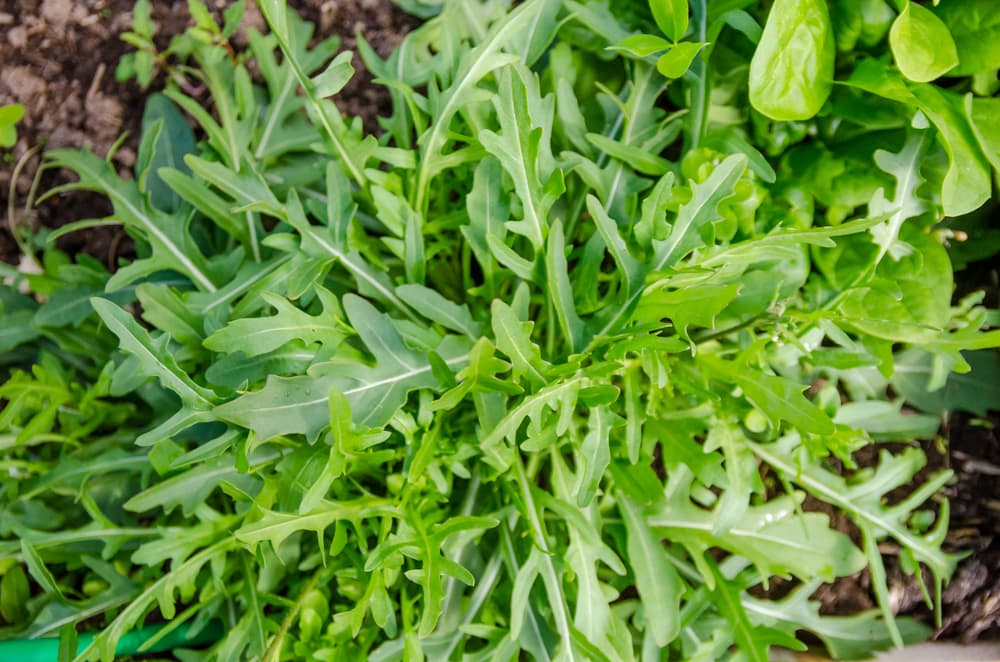
As for Diplotaxis tenuifolia, it is a perennial that is called ‘Wild Rocket’ – it has a sharper, more intense flavour than Salad Rocket and its varieties.
Overview
| Botanical Name | Eruca vesicaria |
| Common Name(s) | Rocket, Arugula |
| Plant Type | Vegetable |
| Native Area | Mediterranean |
| Hardiness Rating | H4 |
| Foliage | Annual, doesn’t overwinter |
| Flowers | White flowers |
| When To Sow | April, May, June, July, August, September |
| Harvesting Months | June, July, August, September, October, November, December |
Sunlight
Preferred
Full Sun or Partial Shade
Exposure
Exposed or Sheltered
Size
Height
0.5 – 1M
Spread
0 – 0.1M
Bloom Time
Summer
Soil
Preferred
Most Soil Types
Moisture
Moist but well drained
pH
Any
Plants of both genera, Eruca and Diplotaxis, are classified under Family Brassicaceae – the Mustard Family.1Eruca sativa (Brassicaceae(mustard family) in karnataka). (n.d.). iNaturalist. Retrieved March 23, 2023, from https://www.inaturalist.org/guide_taxa/338656
It is little wonder that these plants’ leaves (and other parts as well) have the sharpness and pungency, to some or another degree, that we associate with mustard.
This article concerns itself with both kinds of Rocket.
Though Salad Rocket or Garden Rocket is the more widely-known and widely-grown, Wild Rocket is seeing an upsurge of interest.
Habitat & Growing Conditions
Rocket species are native to Italy and the Mediterranean regions; growing as far east as China.2Eruca vesicaria. (n.d.). Kew Royal Botanic Gardens. Retrieved March 23, 2023, from https://powo.science.kew.org/taxon/urn:lsid:ipni.org:names:1137625-2
They, particularly Wild Rocket, are tough plants that can thrive in poor-quality soils.
They colonise all kinds of ground so rapidly that they are considered weeds or invasive plants in some parts of the world, such as Australia and Arizona.3wall rocket, Diplotaxis tenuifolia. (n.d.). Invasive.org. Retrieved March 23, 2023, from https://www.invasive.org/browse/subinfo.cfm?sub=14695
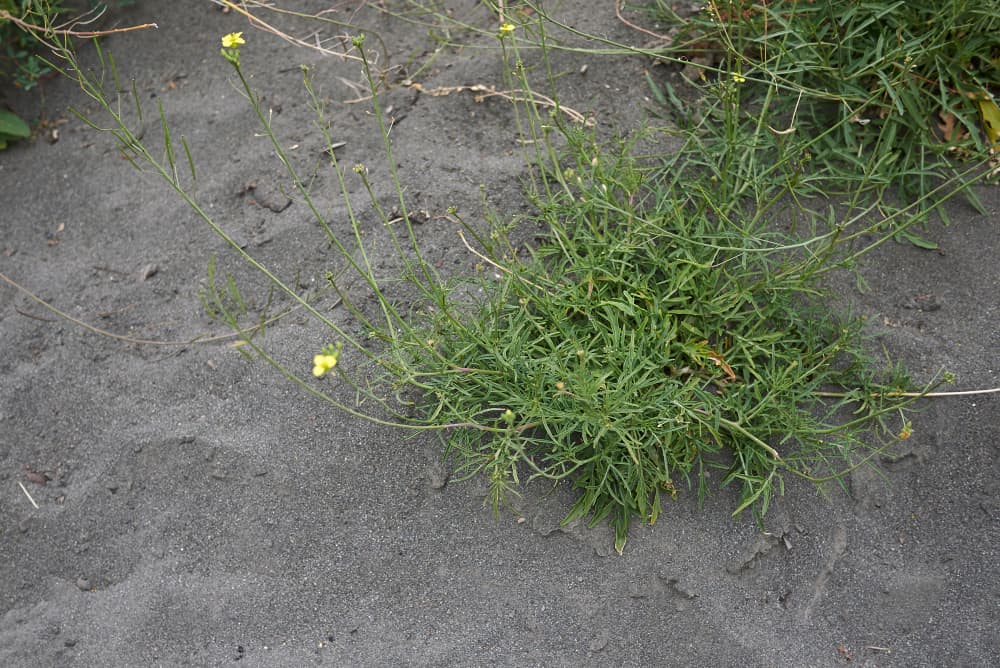
These plants, having spread from their native regions, now grow readily in temperate locales.
A halfway decent loam mix will be just fine for growing Rocket plants.
For optimum results prepare loose soil with some organic manure. The soil should drain well.
Soil pH may range from slightly acidic to slightly alkaline.
The plant will grow well in full sun and also part shade.
How To Grow Rocket
Regular Salad Rocket plants in pots are widely available at nurseries and garden centres.
Wild Rocket is also available, just not as widely. Seed packets of each are also found at garden centres.
Seed packets of the more recent cultivars are available online at specialist seed merchants.
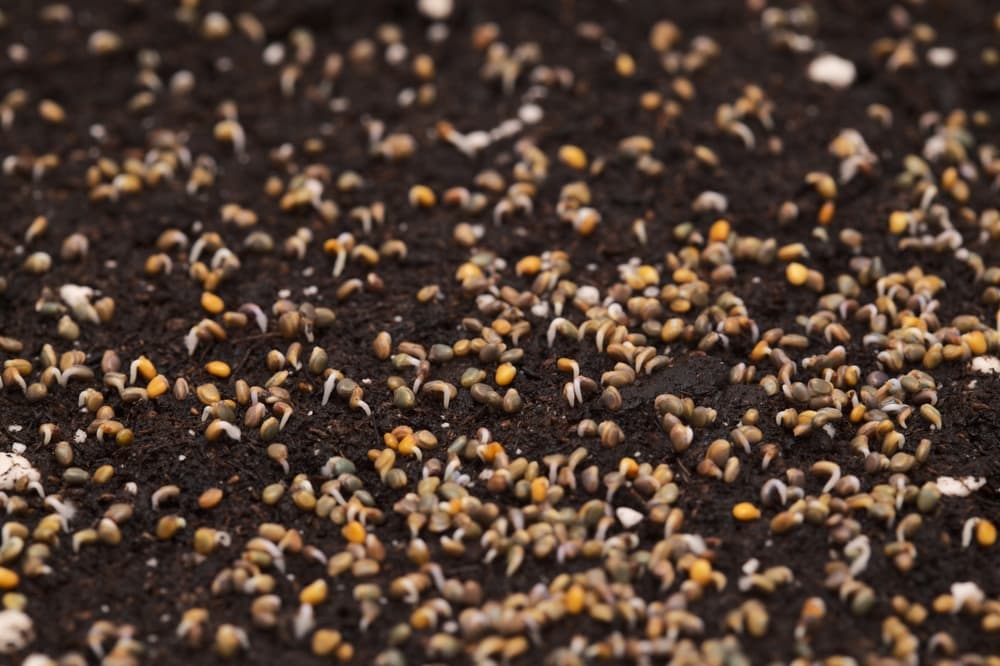
You are sure to find a few pots of a couple of special varieties at a garden centre that has a good herb-and-veg focus.
Growing Salad Rocket From Seed
Salad Rocket can be sown in a heated frame from February and outdoors from April onwards.
Whether you sow it in beds or pots, both the plant and its use lend themselves to successional sowing.
It may be sown every two to three weeks for a continuous supply of fresh leaves through to autumn.
- If planting in a bed, sow seeds in rows.
- Cover seeds loosely with a layer of soil of about 0.5cm.
- Seeds should be sown 3-7cm apart and rows spaced about 30cm apart.
- If planting in pots, sow seeds two or three to a terracotta pot of about 25cm diameter.
Give the freshly-sown seeds a good watering so that the soil becomes well wet.
Watering Salad Rocket, an annual, can be a tricky balancing act.
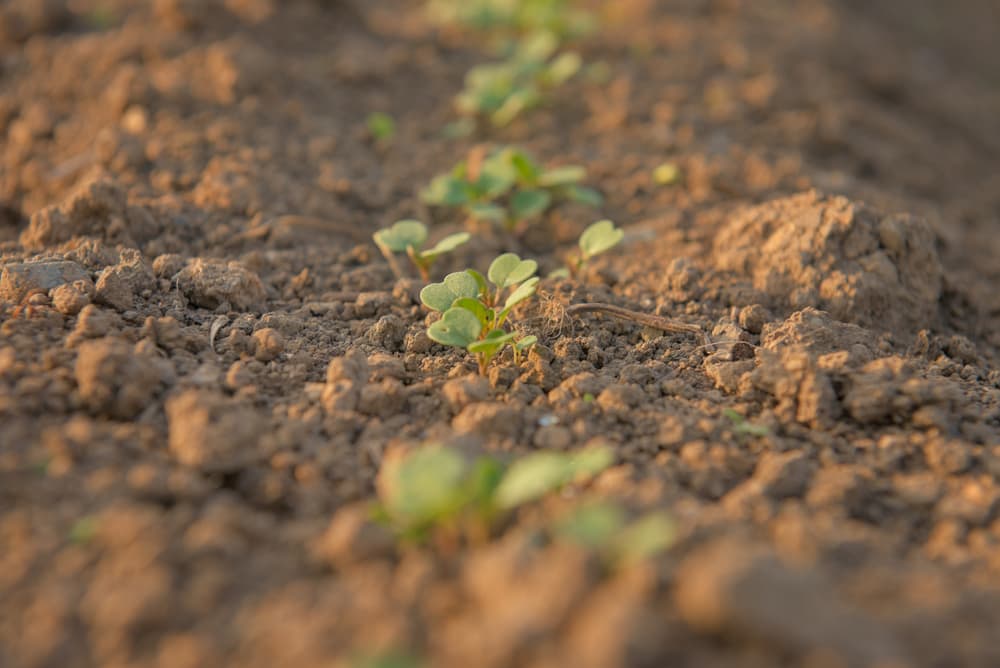
If plants are not watered well enough and the soil becomes dry, they will bolt (run to seed).
On the other hand, keep watering them a little too well and the leaves will lose their kick and become bland.
The trick is to keep the soil just moist.
Weed the bed or pots as you normally would.
As the seedlings grow, thin them so they are about 15cm apart or one to a pot – the thinnings should not find a place in your compost pile but on your kitchen table!
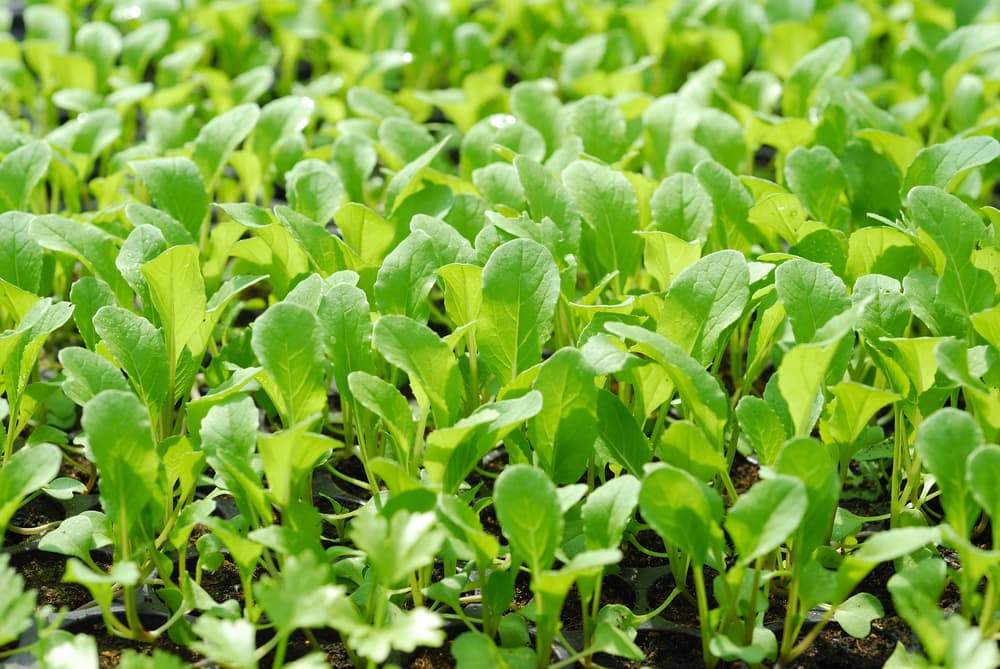
If the weather gets hot and your plants are exposed, they must be protected from the hot afternoon sun otherwise the leaves will lose their tenderness and flavour.
You can also start off Salad Rocket in autumn.
“I find that autumn sown Rocket avoids the problem of bolting that can happen as a result of hot summer days, particularly as I grow mine in a greenhouse,” says Horticultural Consultant Colin Skelly.
“Once Rocket has bolted, I find the taste too bitter, so avoiding this is crucial to my crop.”
It can be grown indoors in pots in a sunny spot that gets sufficient sunlight through the morning, and can be grown outdoors if it is protected by horticultural fleece.
Growing Wild Rocket From Seed
Wild Rocket may be grown the same way except that as it is a perennial you do not need to worry about sowing it again the following year.
They are also not prone to bolting.
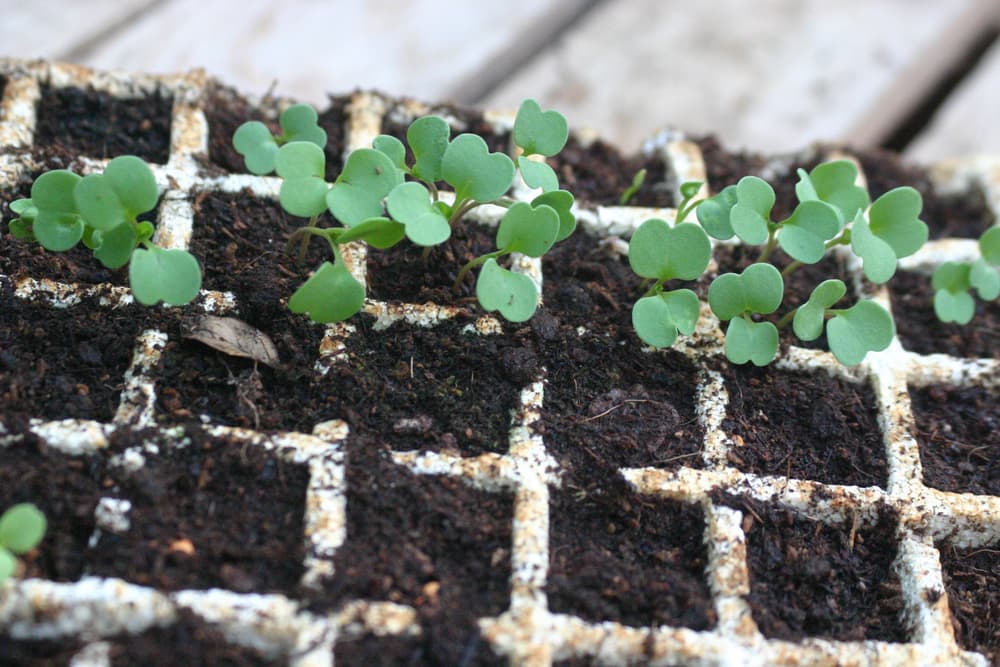
Grow as many plants as you need and then judiciously harvest leaves as you need them on a true ‘cut and come again’ basis.
As long as a Wild Rocket plant is not severely harvested or over-harvested it will survive through the winter if it is protected with fleece or in a cloche, and continue supplying you with greens the following spring.
Harvesting Rocket
Leaves from plants are ready for picking about one month from sowing.
Pick bigger, older leaves for a more intense taste and for cooking purposes; Rocket can be cooked like spinach.
Pick smaller, newer ones for a gentler flavour for using raw in salads or as garnish.

Pick two or three leaves from each plant, harvesting several plants at a time. Do not over-harvest a single plant.
Flowering
When you notice a plant putting out buds, you have a choice.
Cut off the stalks to redirect the plant’s energies to the leaves, or allow the buds to bloom and then harvest the flowers for use in the kitchen.
Likewise, you can also let the flowers wither into seed pods and then harvest the pods – both seeds and pods are edible.
Finally, you can simply allow some selected plants to flower and then run to seed so that they self-seed; thus, your supply of Rocket plants and leaves will continue automatically.

In hot and dry weather do not let the soil dry out and stay dried out, otherwise the leaves will have a harsh, bitter taste.
Common Problems
Rocket varieties are generally disease-free.
The one pest you need to keep a watch for is flea beetle, particularly at the seedling and young plant stage.
If you anticipate an attack by flea beetles you can try to head off the problem by growing the plants under fleece.
Otherwise release beneficial predators such as ladybugs and ground beetles, or use safe organic sprays.
Bolting is a particular problem with Salad Rocket though not with Wild Rocket – follow the guidance above to avoid bolting.
In addition be sure that plants are not too close and are about 15cm apart or one to a pot.
References
- 1Eruca sativa (Brassicaceae(mustard family) in karnataka). (n.d.). iNaturalist. Retrieved March 23, 2023, from https://www.inaturalist.org/guide_taxa/338656
- 2Eruca vesicaria. (n.d.). Kew Royal Botanic Gardens. Retrieved March 23, 2023, from https://powo.science.kew.org/taxon/urn:lsid:ipni.org:names:1137625-2
- 3wall rocket, Diplotaxis tenuifolia. (n.d.). Invasive.org. Retrieved March 23, 2023, from https://www.invasive.org/browse/subinfo.cfm?sub=14695

